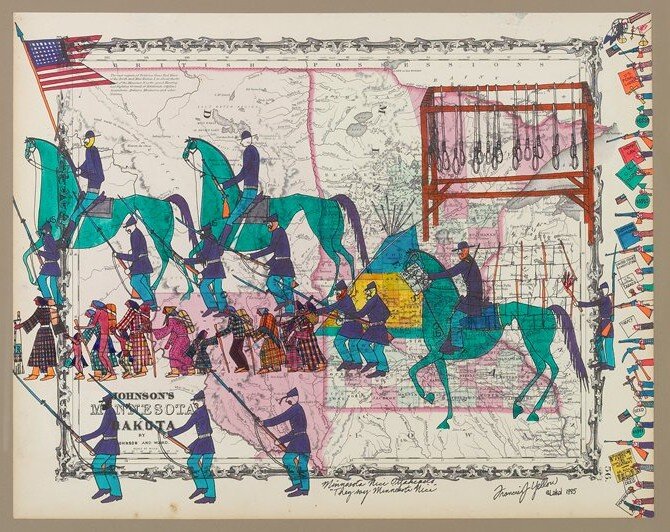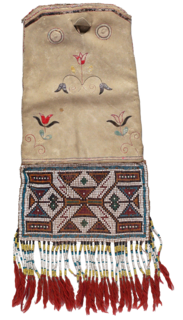
This contemporary ledger art piece depicts events that took place after the U.S.-Dakhóta War of 1862. First, the U.S. government separated many Dakhóta families in southern Minnesota, known as Lower Sioux Reservation. Dakhóta women, children, and elders were then marched to Fort Snelling, where 392 Dakhóta males, accused of waging warfare against the United States, stood trial without English interpretation. Found guilty, 38 men and boys were hanged on December 26, 1862, in Mankato, Minnesota, under orders of U.S. President Abraham Lincoln. This event would be recorded as the largest mass execution in U.S. history.
Dakhóta, Lakȟóta, and Nakhóta people use art and storytelling as tools to depict historical events. Here, the artist used the form of a winter count (traditional pictorial calendars on hide) on paper to show the heartache of family separation and land estrangement for the Dakhóta Oyate (Nation). In the spring of 1863, the Dakota women, children, and elders remaining at Fort Snelling were sent by steamboat to Crow Creek, S.D. Many children and elders died during the trip. For many Dakhóta people, this would be their last time on their homelands.




